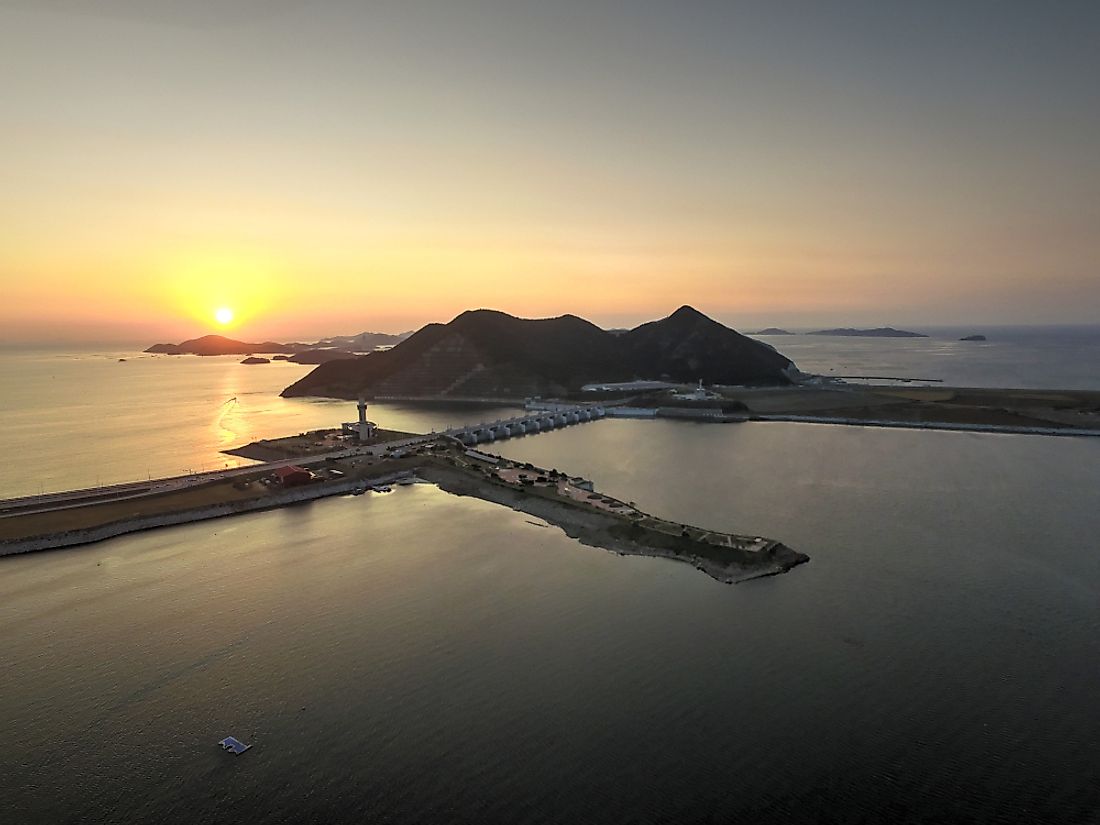What Is The Saemangeum Seawall?

The Saemangeum Seawall is a man-made dyke in South Korea that formed the Saemangeum estuary and it remains the country’s largest-ever development project. The Government of South Korea mooted the project in the 1970s and commenced it in 1991 but construction finalized in 2010 after several challenges including environmental concerns. Saemangeum Seawall is 21 miles long and located in the southwestern coast of the Korean Peninsula, the longest of its kind in the world. This project is part of South Korea’s government ambitious projects to reclaim parts of the ocean and build industrial, tourism, and agricultural facilities by the year 2020.
Details Of The Project
The seawall encloses 160 square miles of seawater which translates to approximately two-thirds of the entire land area of Seoul. South Korea’s plan was to construct a dyke to link a total of three headlands located in the south of Gunsan, the country’s industrial coastal city located 168 miles from Seoul. The purpose of the seawall was to create a freshwater reservoir and at least 150 square miles of agricultural land. Engineers finished major construction in 2006 and by 2010, they completed minor construction details and inspection, after which an official opening to the public occurred on April 27, 2010. The water reservoir has its widest width at 1,755 feet, giving an average width of 950 feet. On average, the height is 118 feet with the highest point being 177 feet tall. After completion, Guinness World Records recognized this seawall as the longest of its kind in the world, breaking the previous record of Zuiderzee Works which had been in existence since 1932.
Funding
South Korea spent at least 1.72 billion USD to construct the wall and budgeted 189.61 million USD to strengthen the dyke against weather elements. They further set aside 1.13 billion USD to transform the area into a reservoir and agricultural land. Although the original plan was to reclaim land for rice farming, the plan changed because current and projected rice production is more than the demand. After completion, South Korea planned to spend more money on reclaiming more land, building infrastructure, and creating big freshwater dams which will facilitate logistics, tourism, industry, leisure, and floriculture by 2020.
Challenges During And After Construction
From the inception of the idea, the Saemangeum seawall project faced legal challenges and criticism from local and international environmental actors. All the actors expressed concern over the impact of constructing the dyke on the environment. In 1999 and 2005, the Supreme Court of South Korea issued injunctions that derailed the project, however, the cases only slowed down the project but did not lead to its stoppage. There were also protests and violent confrontations between police and demonstrators. Protests went down after the government committed to fight upstream river water pollution and address some of their environmental concerns. Prior to 2010, the area had been a habitat for migratory birds in addition to it offering a feeding ground for close to 500,000 shorebirds. Among the birds were the endangered Nordmann's Greenshank and spoon-billed sandpiper. The number of birds has reduced significantly after the completion of the Saemangeum seawall. Some environmentalists also believe the dyke will destroy mudflats that are home to natural water purifying plants and other wildlife.











